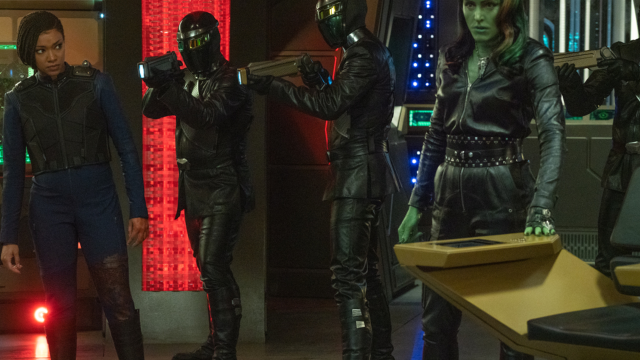Star Trek: Discovery is three seasons in now, and we have a sense of the sort of big stakes and dramatic action it likes to hang its endgame scenarios on. So far, they’ve been an uneven affair, leaning heavily on big, explosive action, gambling on big shocks at the expense of really satisfying the ideas each season tackled. But that’s not exactly the case the third time around.

Don’t get me wrong, that’s not to say “That Hope Is You, Part 2” — calling back to the very first episode of the season — skimps on the action. Anything but. This is an escalation of the already-explosive events of the past two episodes, as Michael Burnham and what’s left of Discovery’s crew take the fight directly to Osyraa to free their ship from their clutches.
In fact, there are plenty of parallels to this episode and Discovery’s last explosive finale, “Such Sweet Sorrow, Part 2,” an episode which cast aside so much for its lavish set pieces and then to risk it all on one shocking game-changing twist. The season three finale might borrow from its action playbook — occasionally disconcertingly so — but for the most part, it crucially remembers the themes and character beats that have mattered most to Discovery this season, and how even at their simplest, they’ve lent the show a sense of optimism it’s always wanted to chase but has never quite managed to feel like it’s earned.
Those beats are, of course, almost buried under Star Trek: Discovery’s most frequent finale love: a lot of explosions. It’s not quite as discordant as season two’s finale in this regard — it’s very much helped that season three has splayed out its endgame scenario across three episodes. Its tone has been balanced between action-adventure and character work, rather than going “here’s one episode of FEELINGS and one episode of PEW PEW PEW KABOOM.” But given that, a lot of this episode is about Emerald Chain leader Osyraa storming away from last week’s peace talks in a huff as Michael, Book, and the remaining crew aboard Discovery attempt to wrest the ship from her control, and so it makes sense.
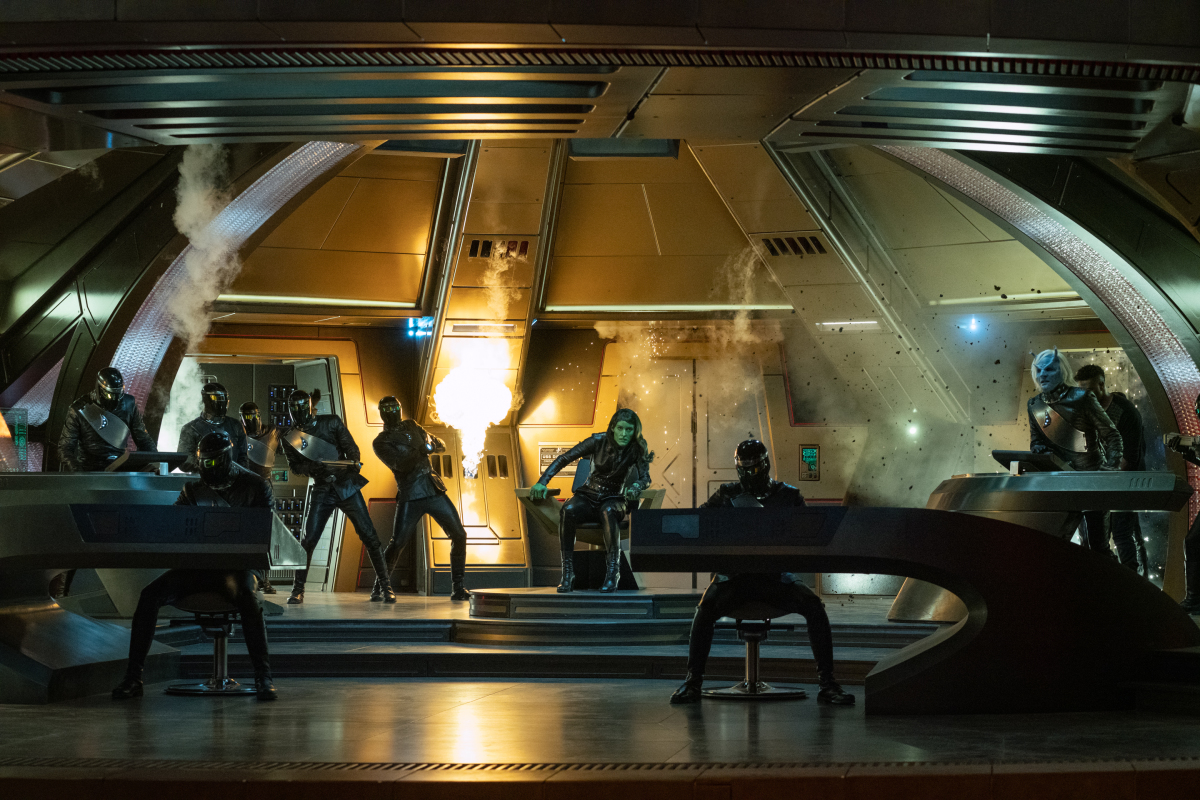
The finale leans heavy on the action, whether it’s aboard the Discovery, outside of it as the Federation attempts to disable the ship before Osyraa can flee, or even back in the Verubin Nebula, as Culber and Saru attempt to calm Su’kal and convince him it’s time to leave the epicentre of the Burn behind. There’s a lot of ground to cover, and sometimes that ground is covered by debris hurtled from a bajillion explosions. It does mean that some things get a little lost along the way, however. Michael almost single-handedly battles her way through the Discovery — hoping to reach its data core and override Osyraa’s control of the ship’s systems — while Tilly’s bridge crew, slowly being starved of oxygen after Osyraa disables life support, head to the ship’s nacelles hoping to knock the ship out of warp.
Although the episode does spend a good chunk of time back in the Verubin Nebula with Culber, Saru, Su’kal, and Adira (joined by Ian Alexander’s Grey who, thanks to the planet’s advanced holoprojections, is actually recognised as an individual being and gets to be seen by people other than Adira for once!), the episode never lets that subplot really breathe. You’re cutting between two very tense storylines, but because the tension in the nebula is more about if Saru can connect with Su’Kal and convince him to leave the only home the traumatised Kelpien’s ever known instead of “How many people can Michael kick and/or shoot on her way to save the day?” naturally the focus is on the flashier side of things.
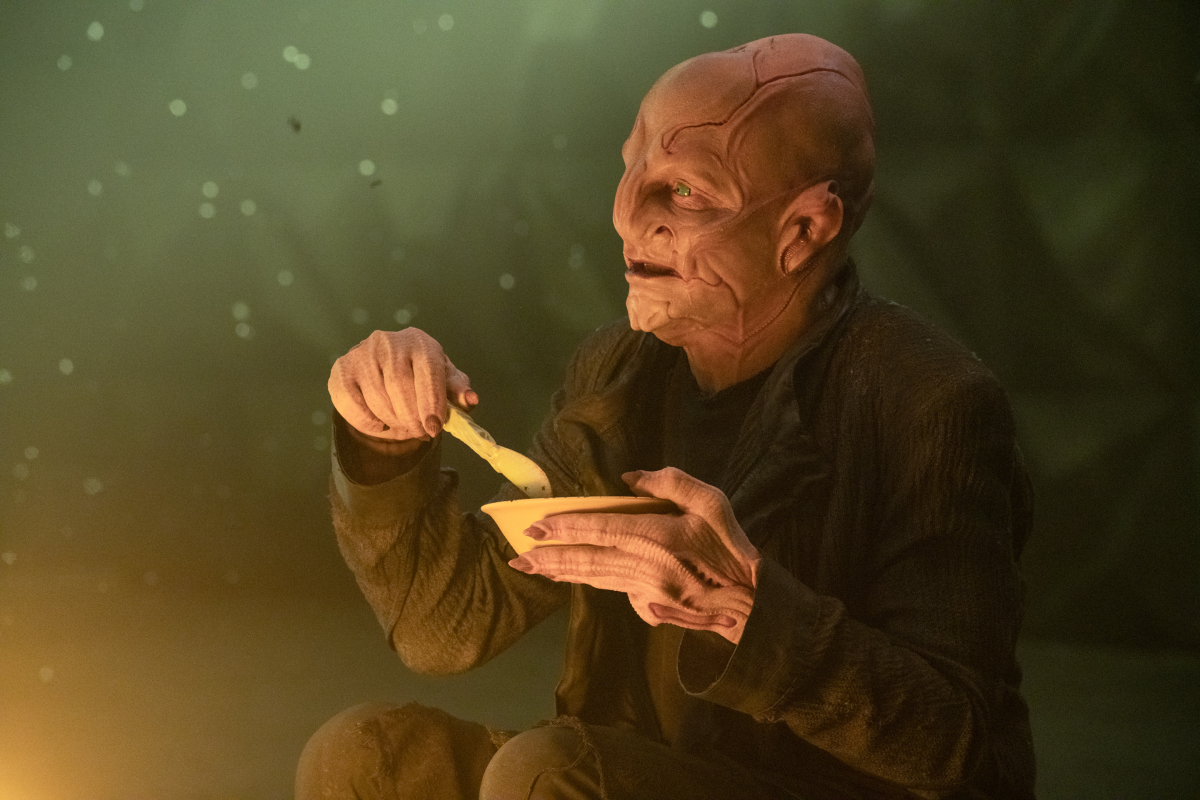
It also means that when Michael and the Disco crew do complete their missions — Michael by blasting Osyraa clean dead in the data core, and the bridge crew putting all their hope in Owosekun and her years of diving experience to hold her breath long enough to destabilize the ship’s nacelle connectors — everything just sort of ends a little too suddenly. Osyraa’s death just means the interesting set up last week of her wanting to potentially work with the Federation is just never picked up again, even if that makes some thematic sense (as we’ll get to), and her death just means the Chain suddenly evaporates as an unseen system off-screen, dealt with in Michael’s epilogue-recap after Discovery picks up Saru’s team and Su’Kal.
Here’s the thing though, as is so often the case with Star Trek: Discovery at its messiest — despite these flaws, what makes “That Hope Is You, Part 2″ work as a finale to this season (in a way that last season’s finale didn’t, outside of its gutsy last-minute commitment to a complete overhaul of the show’s premise) is that there was actually something beyond all that flashy action bluster. There was a thematic core that didn’t just call back to the themes established in the very first episode of season three, but helped remind us what this entire season of the show has been about (beyond the intrigue of its new far-future setting). It’s the idea of the power hope can have, but also the power it gains when that hope is shared among people.
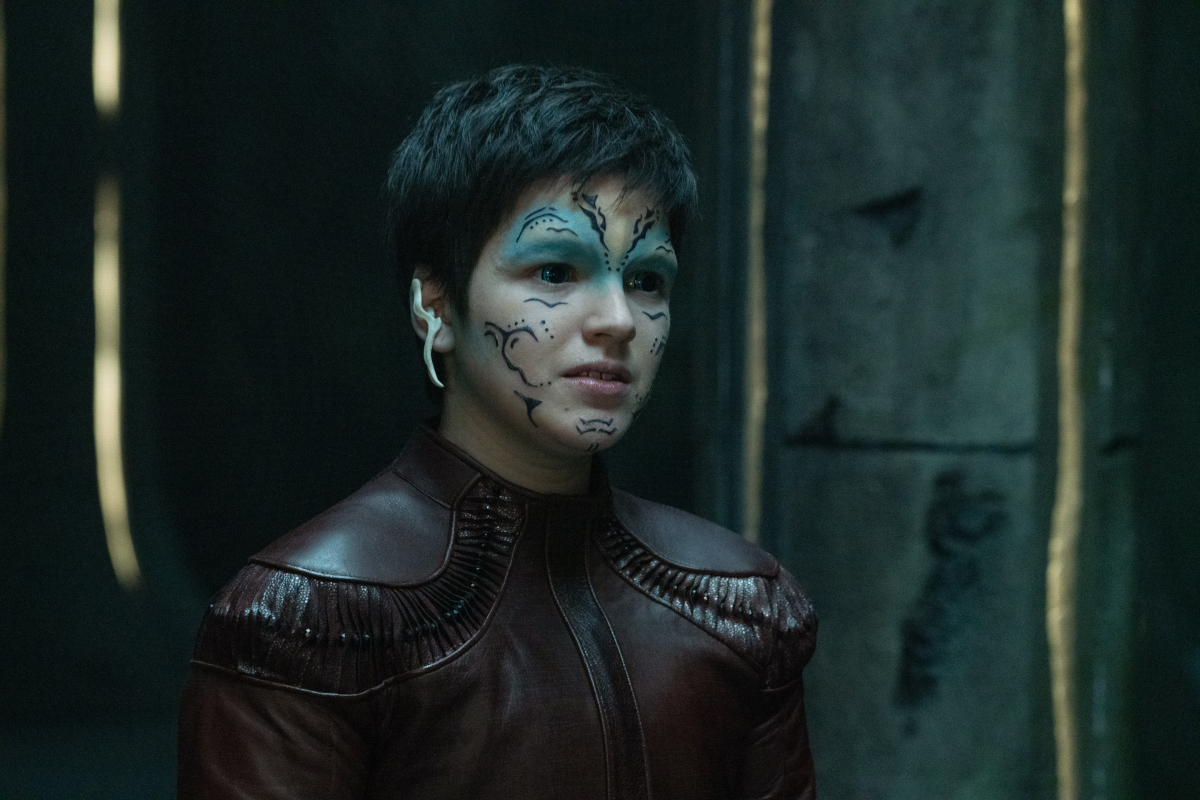
So it makes sense that this episode is titled as a “Part 2” to the season premiere. There, we saw Michael wrestle with the stress and trauma of having the hopes of all her friends and colleagues, of her own timeline, of the very survival of organic life itself, rest solely on her shoulders, and how that trauma was relieved in part by being able to share hope with Cleveland Booker, a man too scared to consider hoping for a better future ahead of him before he met her. The finale is about much the same, in that hope in your own heart is one thing, but a hope and faith shared in the people you surround yourself with is so much more.
In the Verubin Nebula, we see Saru do this with Su’Kal, opening up over how, despite his seemingly human appearance thanks to the holo, he too is a Kelpien, one who was once as scared by the world around him as Su’Kal is. At Federation HQ, we see it in Vance, having been so at odds with Michael’s approach to literally anything since Discovery arrived on the scene, finally putting the faith in her to hold out and save the Federation’s last hope for alternate FTL travel. We see it aboard the Discovery itself, when Tilly, Detmer, Rhys, and Bryce all put their trust in Owo, giving her the last of their oxygen supplies, believing in the knowledge that she will pull through for all of them and complete the mission.
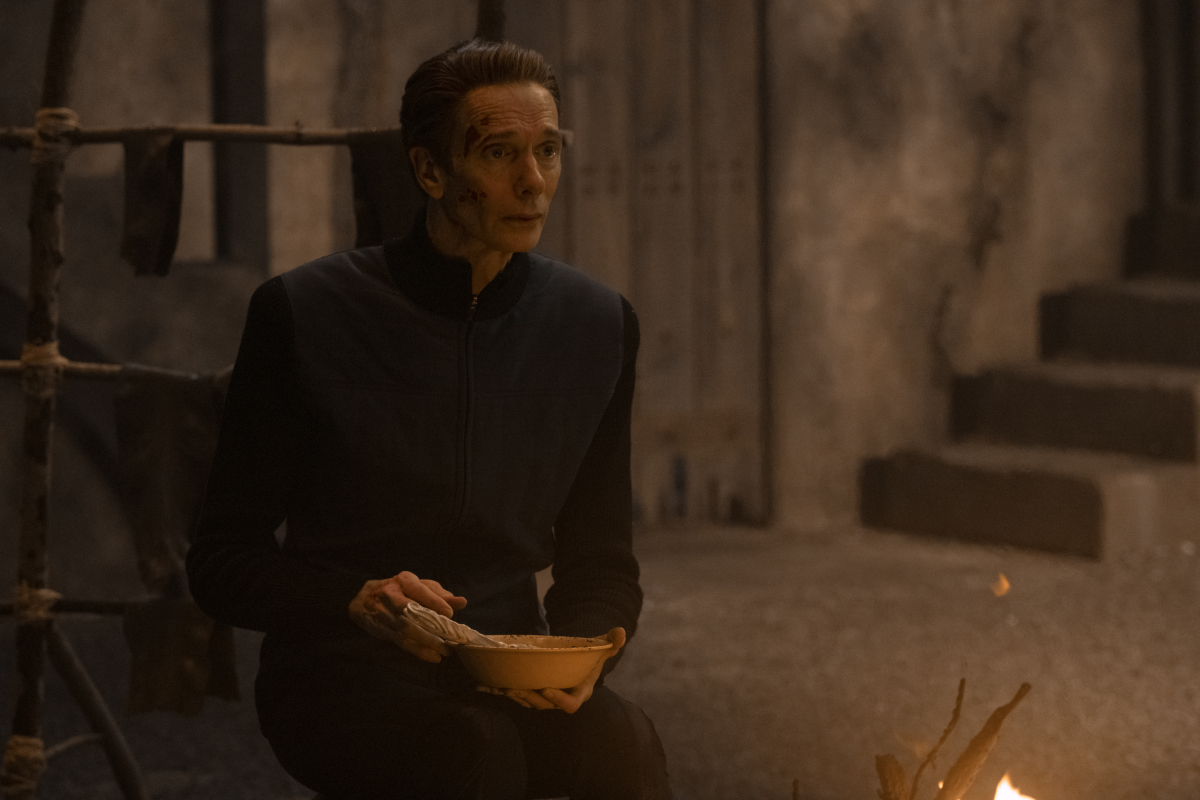
Crucially, we also see this sharing of hope and faith rewarded for our heroes, too: Saru bonds with Su’Kal, encouraging him to face the trauma of losing his mother and leave the nebula behind. Michael successfully ends the threat of Osyraa and brings Discovery back to Starfleet, earning herself a major promotion in the process. We see it in Owo managing to destabilize Discovery’s warp bubble long enough to save the ship from being lost altogether (with a little push from one of the DOT-23 drones). And just as crucially, we see what happens when that hope isn’t shared in Osyraa’s downfall: having been so completely opposed to the idea of relinquishing sole control and power to deal with Vance, she threw away a chance for peace. Aboard Discovery, as she’s surrounded herself with mercenaries and lackeys she can strongarm into co-operation, we watch her aims slowly but inevitably fall apart — where the wills of the many far outweigh the wills of a few, tyrannical voices, because those wills are emboldened by a shared hope.
It is a simple idea, and far from the headiest material Star Trek has ever attempted to engage with, but in running with it throughout this season — at a time when communal hope and connection in our own lives felt needed more than it has in a long while — returning to this theme gave Discovery’s third season a bright, consistent core that its prior seasons felt like they were lacking. For all the spectacle of this far-flung future setting or for all the explosive action of this episode, it brings Discovery back to a sense of basics in the best way.
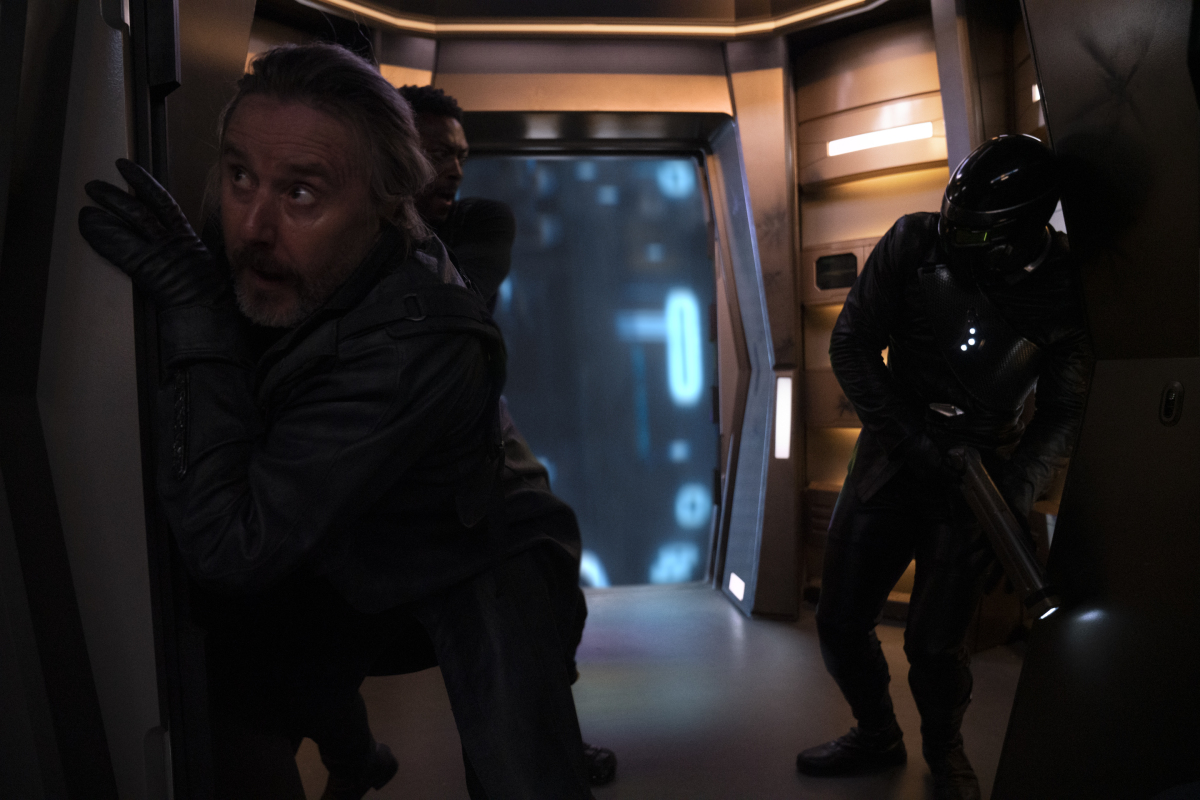
It’s perhaps funny then, that it took this bold gamble to the 32nd century for Discovery to finally feel like an homage to the original Star Trek in the most earnest sense after two seasons ceaselessly chasing its long shadow through direct connections to its canon. As the Federation slowly begins to rebuild in the wake of the Emerald Chain’s collapse, and Saru decides to temporarily step down from command to spend time with Su’Kal and his people, Admiral Vance awards Michael Discovery’s captaincy, giving her a new mission in the process: take the dilithium found in the Verubin Nebula and go to the Federation’s farthest reaches. Go out to the galaxy and give these disconnected worlds hope, as the Federation works its way back to being an alliance joined across the galaxy. Her own five-year mission, if you will, just without the time constraint.
It’s a fitting tribute, even if it took three years and some wild upheaval for Discovery to really get there. In the end, it proves that underneath the flash of modern Star Trek, there can still be the same, simple, optimistic core that has driven the entire franchise since the very beginning: the sense of community that can come in shared hope. Now it’s up to Michael and the Discovery to be the beacons sharing that hope, finally boldly going where their ancestors have gone before.
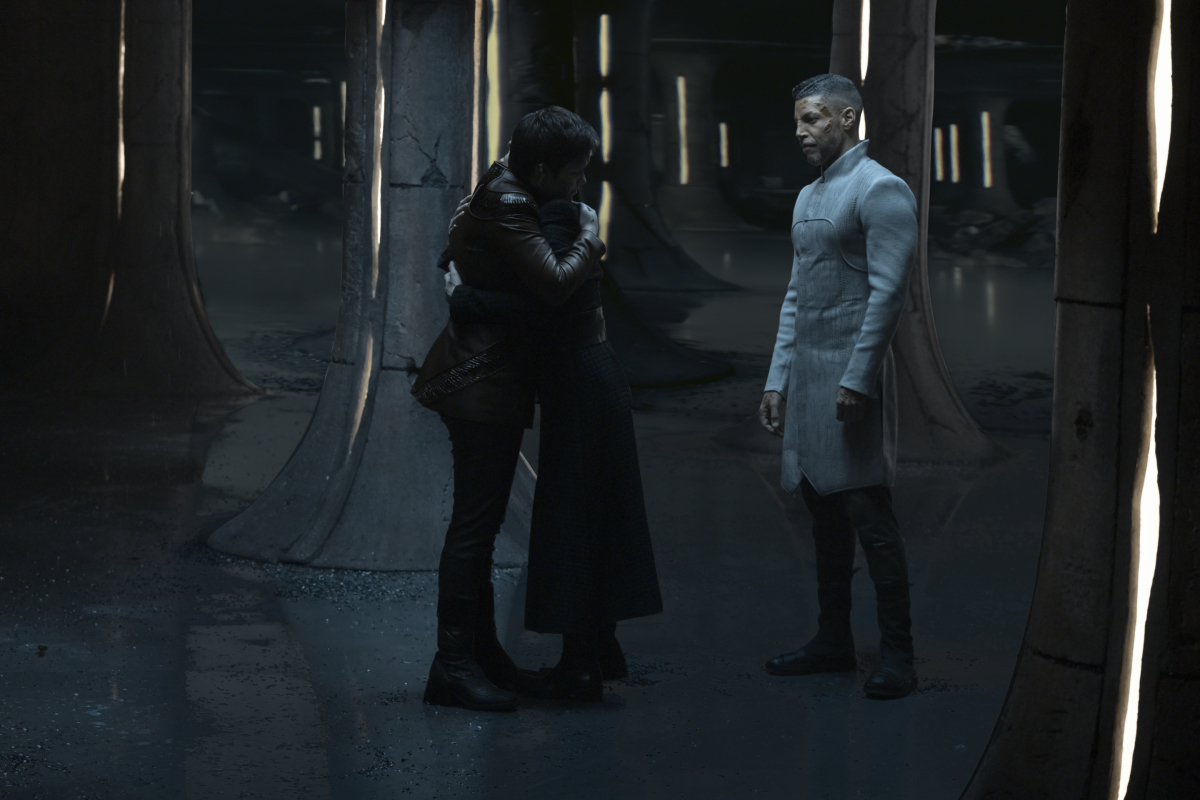
Assorted Musings:
- Awww though, with Michael’s Captaincy there comes another farewell, it seems: RIP to the Discovery uniforms! As much as I do like the “new” 32nd Century uniforms, I will miss those blue jumpsuits.
- I wonder if Su’Kal will become a prominent character on the show now, especially with Saru now so closely connected to him. How long will Saru be off-ship, or will Su’Kal potentially join him aboard Discovery whenever he returns next season?
- I don’t know why, given with hindsight the connection is obvious — glaringly so after the episode with his homeworld — but I did not expect Book to become a second spore drive catalyst through his empath abilities. It’s fun though, not just because it opens up what the show can do with the spore drive (threatening it now doesn’t just mean threatening poor Stamets, who’s faced a lot of that for three seasons!), but dramatically it opens up some very interesting potential with Stamets and Michael’s relationship. He doesn’t exactly like her at the best of times, but considering she blew him out of the ship last week leaving him thinking his family was going to be abandoned to die, he’s probably not too pleased at her boyfriend now also talking to his spores.
- As someone who was very wary about where Discovery could go with Grey’s arc after killing him off as part of his introduction and Adira’s story, I’m pleased that not only will Ian Alexander continue to be part of the show, but that also part of Adira’s arc next season will be about them finding a way to make Grey more present to others outside of themselves. Even if it’s not a complete resurrection or anything, it’ll be great to see those characters be able to interact with the larger crew. The holos on the Dilithium planet worked pretty well, maybe someone in the 32nd Century has got a mucb better version of Voyager’s mobile emitter laying around?
- Speaking of Voyager, with the Chain seemingly completely out the picture and the Federation slowly re-expanding, it’d be really interesting if Discovery’s fourth season took a more episodic approach inspired by Janeway and crew’s time in the Delta Quadrant: no big centralised villain of the season, the Discovery largely out on the frontiers alone, visiting new planets and getting up to adventures as they go out shipping dilthium or facilitating paths for worlds to join the Federation. Maybe with Strange New Worlds on the horizon pitching itself as that kind of less-serialized Trek that’s not to be, but it’d be interesting for the show to try for a bit!
